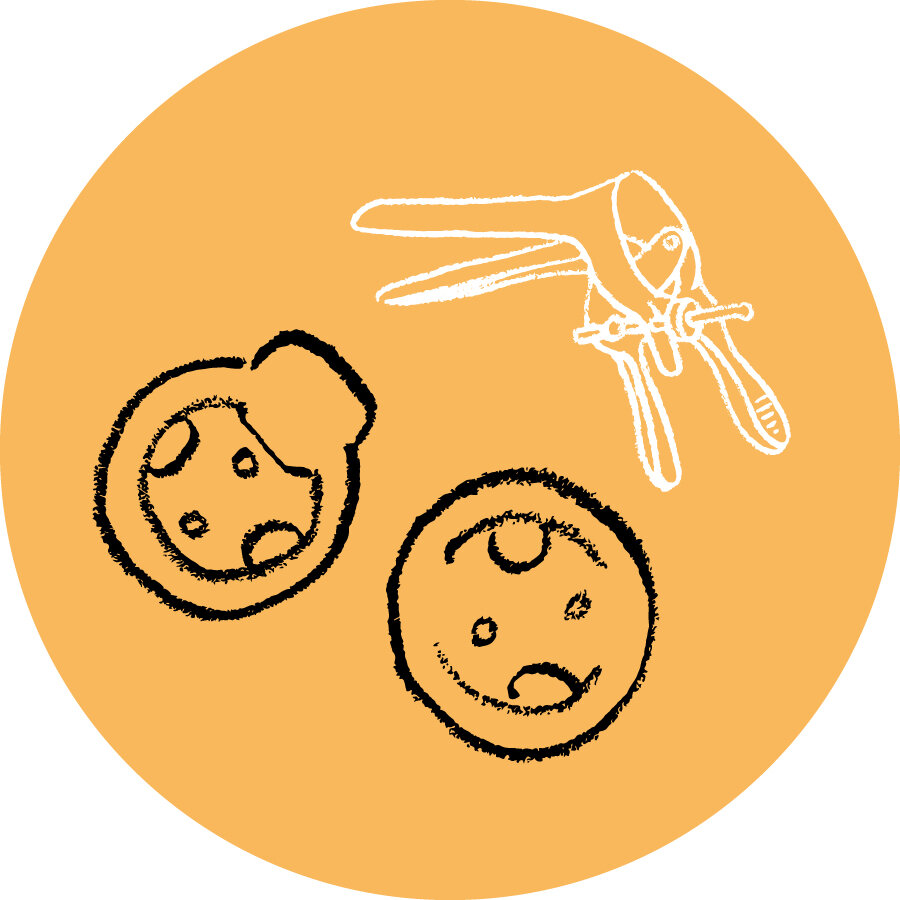
Dyspareunia, including Vulvar Vestibulodynia
An evidence-based physical therapy approach (or what do Sherlock and tomatoes have in common?)
Why choose our courses?
Course description
This course will examine, in an evidence-based approach, the presentation, pathophysiology, and physical therapy evaluation and interventions for dyspareunia through the life span, including, but not limited to, the most common cause for painful intercourse, vulvar vestibulodynia. Pain pathophysiology, EMG biofeedback, the impact of dyspareunia on relationships, sexual response, conception, and anxiety as well as evidence-informed specific treatments to address these concerns within a physiotherapy scope of practice will be included. Specific cognitive behavioral (CBT) and mindfulness techniques for use directly in physiotherapy treatment are also taught. A basic introductory pelvic floor course with instruction in vaginal exams is required. Courses in central and peripheral pain pathophysiology and treatment are an asset, but not mandatory. Course participants also participate in the lab/practical session. This may involve perineal, vaginal and/or rectal exam.
EMG biofeedback units will be available for each group of 2-3 learners throughout the course for all lab sessions. Learning this skill is another good reason to take this course!
Course participants will leave the course with new skills to use immediately on return to their office the next day!
Course participants also receive 1/2 day clinical shadow opportunity OR a 1-hour scheduled on-line consult with course instructor within 3 months of course completion.
Course participants
This course is open to Registered Physical Therapists physicians, nurse practitioners, midwives, registered nurses and naturopaths. Physical therapy students may also attend. Labs include internal palpation.
Prerequisites
This course is open to Registered Physical Therapists physicians, nurse practitioners, midwives, registered nurses, naturopaths and physical therapy students who have completed a basic introductory pelvic floor course with instruction in internal exams.
Course Format
Online live lecture, discussion, case studies and lab
Lab component involves internal vaginal and rectal palpation
Course Dates and Times
Online: June 4-5, 2021, 8 AM-5 PM PDT
Lab: Vancouver — Sunday, June 6, 2021, 8 AM-5 PM PDT
Lab: Victoria — Saturday, June 12, 2021, 8 AM-5 PM PDT
Full attendance (online and in lab) is required to receive course certificate
Online in your happy place, but lab too far away? Group discounts (6 or more) available for us to bring the lab component to your city. Email PelvicRehabCourses@gmail.com to discuss.
Practical Location
Vancouver — Sunday, June 6, 2021
Envision Physiotherapy
672 leg in Boot Square
Vancouver BC V5Z 4B4
Victoria — Saturday, June 12, 2021
To be announced, central location
Tuition
Registered Physiotherapists and other licensed health professionals:
Early bird rate: $650.00 + 5% GST ($682.50, on or before May 2, 2021)
Tuition: $700.00 + 5% GST ($735.00)
Physical Therapy Students:
Student Tuition: $600.00 + 5% GST ($630.00)
Maximum 4 student spaces per course
Confirmation of active enrollment in a physical therapy program is required
For further course or registration information please email PelvicRehabCourses@gmail.com
Why choose our courses?
All courses:
Our courses focus on active rather than passive techniques. Treatment techniques are supported by incontinence, prolapse and pain science peer reviewed literature. Learn new techniques for your “tool box” that are not myofascial or trigger point related.
Emphasis on client empowerment through education and active treatment.
Learn to differentiate between motor control and strength issues.
Understand the value of skilled EMG biofeedback use.
Get practical experience using EMG biofeedback in small groups.
Develop critical thinking skills in the assessment and treatment components of the course. We want all course participants to receive an honorary Sherlock Holmes Degree! Return to the clinic the next day with the ability to critically analyze your subjective and objective findings. There is no recipe. Every question you ask and intervention you give needs to have a purpose based on your critical analysis and thinking. If you don’t understand during the course – Ask us! Challenge us!
Explore concepts of hypertonicity and increased tone in voluntary muscles with no neurological damage or deficit.
Group rates (6 or more) for lab component at non-advertised location are available. Please contact: PelvicRehabCourses@gmail.com
1/2 day clinical shadow OR a 1-hour scheduled phone/FaceTime or Skype consult with course instructor within 3 months of course completion.
10% of net proceeds will be donated to the Physiotherapy Foundation of Canada.
Introductory Pelvic Floor, Incontinence, Prolapse and Prostate Cancer Courses:
Evidence-based treatments for muscle strength and endurance gains.
Recognize when estrogen or pain medication may or may not be helpful and how to have this discussion with patients and physicians.
Get practical experience using EMG biofeedback in small groups.
Understand the sexual health impact of prostate cancer treatment and the role of physiotherapy
Explore concepts of hypertonicity and increased tone in voluntary muscles with no neurological damage.
Understand the sexual health impact of prostate cancer treatment and the role of physiotherapy.
Pain Condition Courses:
Evidence-informed active (rather than passive) treatment techniques for your tool kit for pain conditions.
Direct application of mindfulness and CBT skills into physiotherapy interventions.
Evidence-based intervention for pain conditions.
Explore concepts of hypertonicity and increased tone in voluntary muscles with no neurological damage.
Learn new techniques for your “tool box” that re not myofascial of trigger point related.
Interventions emphasize client empowerment through education and active treatment.
Education on current female and male sexual response theories and how to directly apply this information within a physiotherapy scope of practice and specific related treatment interventions.



